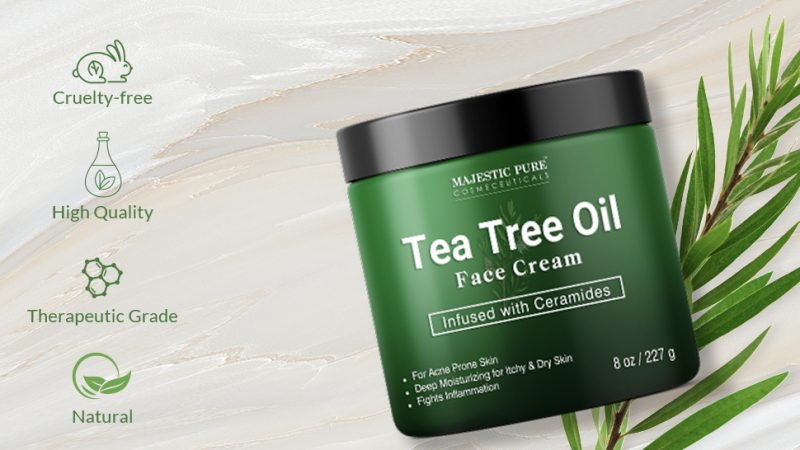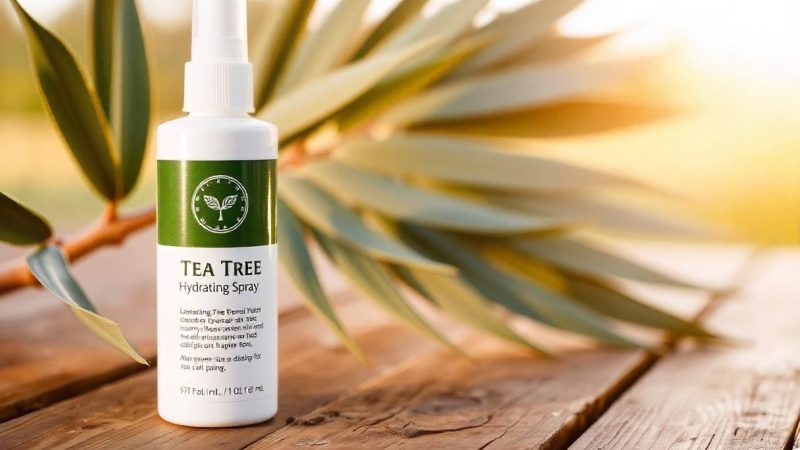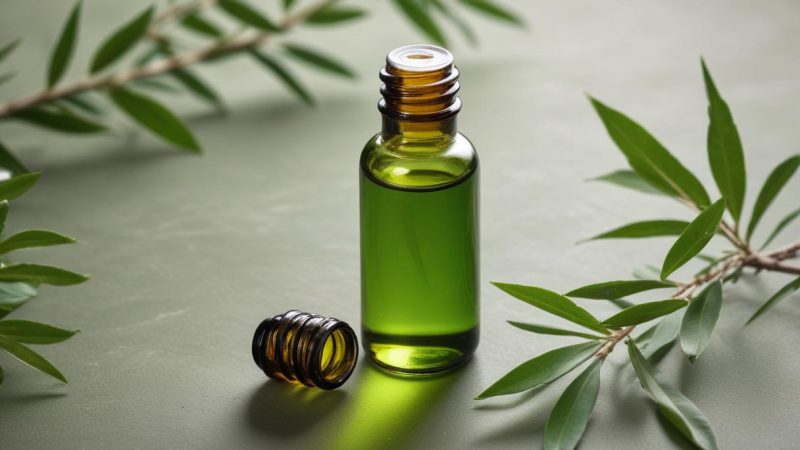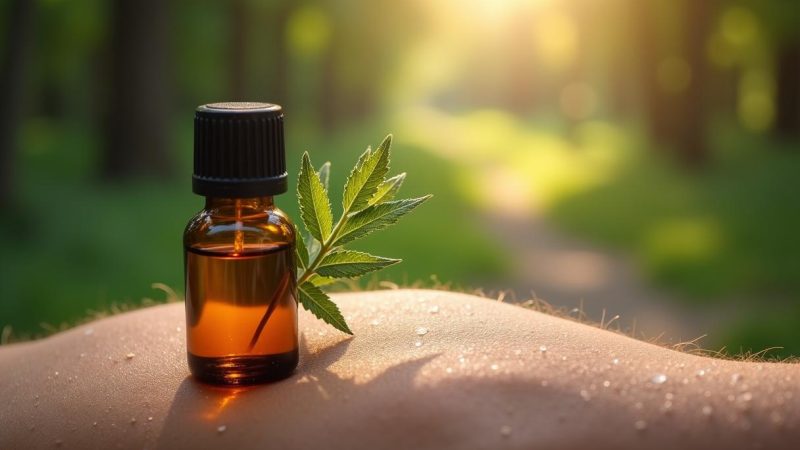Tea Tree Oil for Ringworm: A Natural Remedy and How to Use It

Ringworm is a common fungal infection of the skin, scalp, or nails caused by dermatophytes, a group of fungi. Despite its name, ringworm has nothing to do with worms; rather, it is characterized by itchy, circular rashes with raised, red edges. Conventional treatments for ringworm often involve antifungal medications, but tea tree oil has emerged as a popular natural remedy due to its potent antifungal, anti-inflammatory, and antimicrobial properties. Here’s a detailed look at how tea tree oil can be used to treat ringworm, along with its benefits, application methods, and important precautions.
Benefits of Tea Tree Oil for Ringworm
- Antifungal Properties
Tea tree oil is renowned for its strong antifungal properties, which make it effective against the fungi responsible for ringworm. The key active compound in tea tree oil, terpinen-4-ol, has been shown to disrupt the cell membranes of fungi, inhibiting their growth and proliferation.
A study published in Antimicrobial Agents and Chemotherapy demonstrated that tea tree oil was effective against various fungal pathogens, including those that cause ringworm. This makes it a valuable natural alternative for treating fungal infections.
- Anti-Inflammatory Effects
Ringworm can cause significant inflammation, leading to redness, swelling, and discomfort. Tea tree oil has anti-inflammatory properties that help to reduce these symptoms. By lowering the production of inflammatory mediators, tea tree oil can alleviate itching and irritation associated with ringworm.
Research published in The Journal of Dermatology supports the use of tea tree oil for its anti-inflammatory effects, which can soothe inflamed skin and enhance comfort during the healing process.
- Antimicrobial Action
In addition to its antifungal properties, tea tree oil exhibits broad-spectrum antimicrobial activity. This helps to prevent secondary bacterial infections that may occur as a result of scratching or compromised skin integrity. Its ability to kill a range of microorganisms supports overall skin health and reduces the risk of complications.
The Journal of Clinical Microbiology highlights tea tree oil’s efficacy in preventing microbial growth, making it a useful adjunct treatment for ringworm.
How to Use Tea Tree Oil for Ringworm
- Topical Application
Tea tree oil should always be diluted with a carrier oil before applying it to the skin to prevent irritation. A typical dilution ratio is 1-2 drops of tea tree oil per tablespoon of carrier oil. This mixture can be applied directly to the affected areas to address the fungal infection and alleviate symptoms.
How to Use:
- Mix 1-2 drops of tea tree oil with 1 tablespoon of a carrier oil (such as coconut oil, olive oil, or almond oil).
- Apply the mixture to the ringworm lesions using a clean cotton ball or swab.
- Gently rub the mixture into the affected areas.
- Allow it to sit for 30 minutes to 1 hour before rinsing it off with lukewarm water.
- Repeat the application 2-3 times daily until symptoms improve.
- Diluted Tea Tree Oil Solution
For those with more extensive infections or larger affected areas, a diluted tea tree oil solution can be used as a topical treatment. This method involves adding tea tree oil to a carrier solution, such as witch hazel or aloe vera gel, to facilitate application and enhance absorption.
How to Use:
- Combine 5-10 drops of tea tree oil with 2 tablespoons of witch hazel or aloe vera gel.
- Apply the solution to the ringworm-affected areas using a clean applicator or cotton ball.
- Allow it to dry on the skin.
- Apply 2-3 times daily until the infection resolves.
- Tea Tree Oil Bath Soak
For ringworm infections on larger areas of the body, a bath soak with tea tree oil can be beneficial. This method allows for widespread application and helps soothe multiple lesions at once.
How to Use:
- Add 10-15 drops of tea tree oil to a warm bath.
- Soak in the bath for 15-20 minutes.
- Pat the skin dry with a clean towel after bathing.
- Use this treatment once daily or as needed.
Precautions and Considerations
- Dilution is Crucial
Tea tree oil is highly concentrated and can cause skin irritation if used undiluted. Always mix it with a carrier oil or suitable solution before applying it to the skin. Perform a patch test on a small area of skin to check for sensitivity or allergic reactions before using it more broadly.
- Consult a Healthcare Professional
While tea tree oil can be an effective natural remedy for ringworm, it should not replace conventional antifungal treatments prescribed by a healthcare provider. Consult with a dermatologist or healthcare professional before starting tea tree oil treatment, especially if you have other skin conditions or are pregnant or breastfeeding.
- Avoid Sensitive Areas
Be cautious when applying tea tree oil to sensitive areas, such as the face, genitals, or mucous membranes. Avoid using it on broken or irritated skin, as this can lead to increased irritation or discomfort.
- Monitor for Side Effects
Although rare, some individuals may experience side effects such as redness, itching, or a burning sensation. If any adverse reactions occur, discontinue use and consult a healthcare professional.
Final Thoughts
Tea tree oil offers a natural and effective approach to treating ringworm, with benefits including antifungal, anti-inflammatory, and antimicrobial effects. When used correctly, tea tree oil can help combat the fungi responsible for ringworm, alleviate symptoms, and prevent secondary infections. However, it is essential to use tea tree oil with proper dilution, adhere to safety precautions, and seek professional medical advice to ensure a comprehensive and effective treatment plan.
Incorporating tea tree oil into your ringworm treatment routine can enhance relief and contribute to a faster recovery. Always follow safety guidelines and consult with a healthcare provider for the best outcomes in managing ringworm.
Sources:
- Carson, C. F., & Riley, T. V. (1995). Antifungal activity of tea tree oil and its components. Antimicrobial Agents and Chemotherapy.
- The Journal of Dermatology. (2000). The effects of tea tree oil on inflammatory skin conditions.
- Journal of Clinical Microbiology. (2005). Broad-spectrum antimicrobial activity of tea tree oil.
- Phytotherapy Research. (2012). Tea tree oil as an effective treatment for fungal skin infections.






